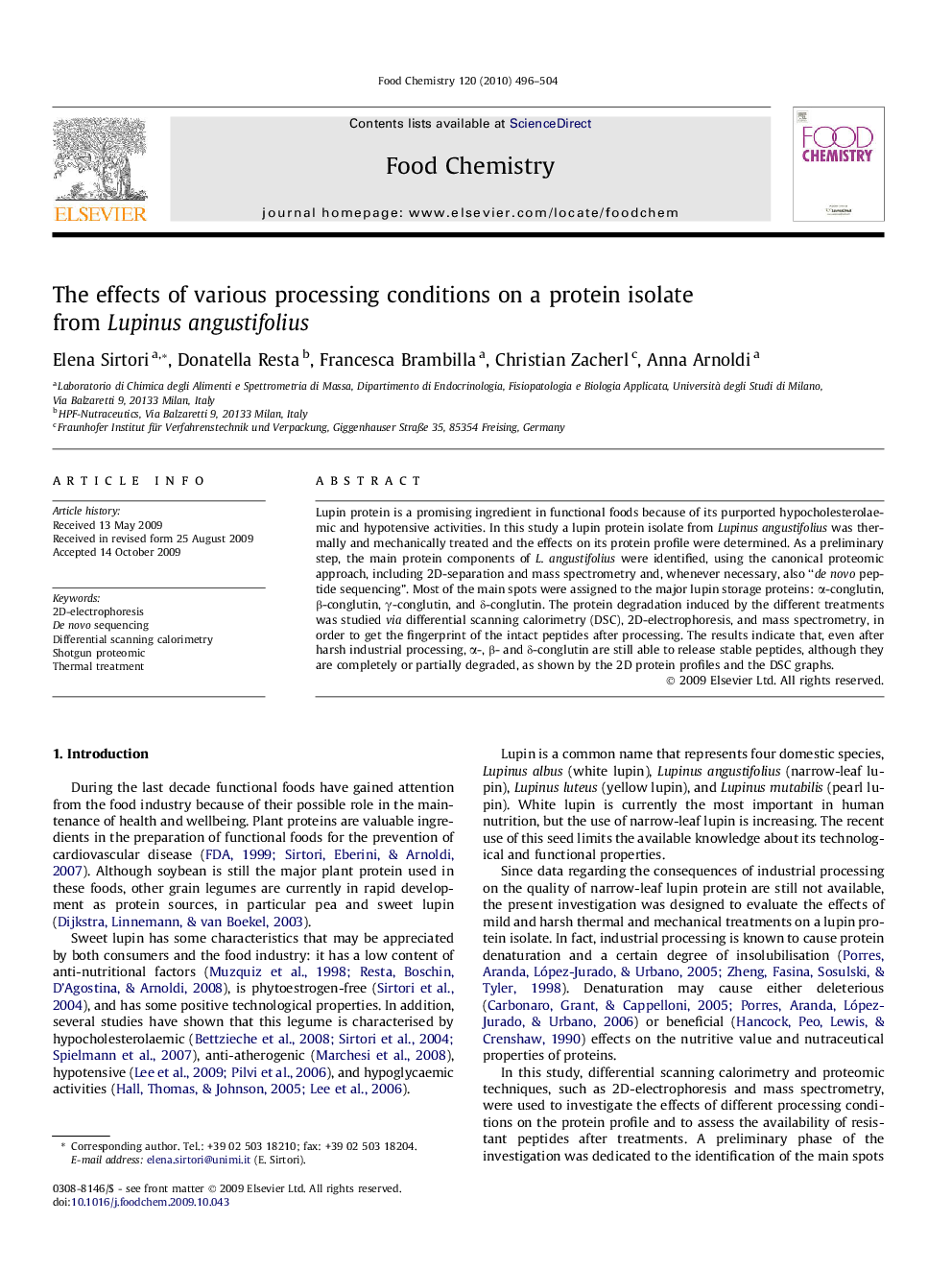| Article ID | Journal | Published Year | Pages | File Type |
|---|---|---|---|---|
| 1186297 | Food Chemistry | 2010 | 9 Pages |
Lupin protein is a promising ingredient in functional foods because of its purported hypocholesterolaemic and hypotensive activities. In this study a lupin protein isolate from Lupinus angustifolius was thermally and mechanically treated and the effects on its protein profile were determined. As a preliminary step, the main protein components of L. angustifolius were identified, using the canonical proteomic approach, including 2D-separation and mass spectrometry and, whenever necessary, also “de novo peptide sequencing”. Most of the main spots were assigned to the major lupin storage proteins: α-conglutin, β-conglutin, γ-conglutin, and δ-conglutin. The protein degradation induced by the different treatments was studied via differential scanning calorimetry (DSC), 2D-electrophoresis, and mass spectrometry, in order to get the fingerprint of the intact peptides after processing. The results indicate that, even after harsh industrial processing, α-, β- and δ-conglutin are still able to release stable peptides, although they are completely or partially degraded, as shown by the 2D protein profiles and the DSC graphs.
